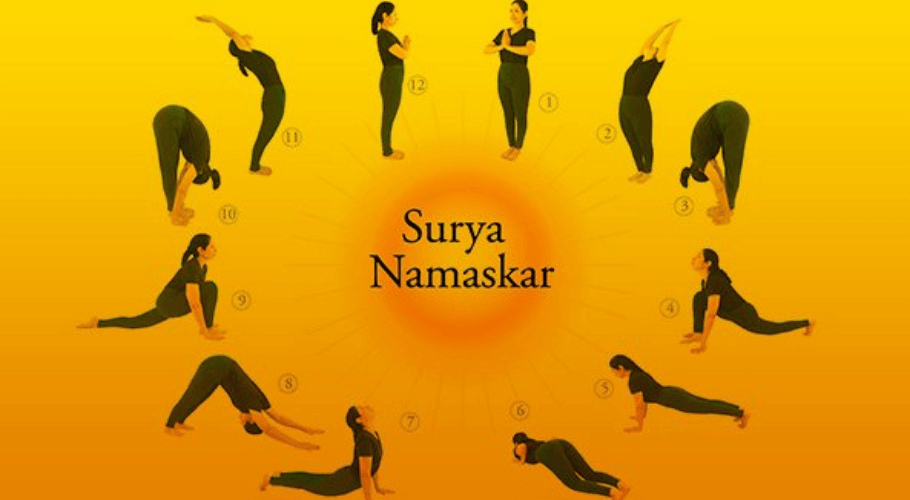Top 10 Yoga Asanas for Managing Diabetes

Yoga Asanas for type 2 diabetes
With the continuing spate of diabetes cases, doctors and patients alike search for new ways to tackle the disorder. But medicines—including insulin—are only temporary respites. The only real treatment is complete diabetes reversal.
A process that includes diet, exercise, and stress management to bring about a behavioral transformation that can help diabetics reverse their condition and sustain it. And one of the most powerful tools in this process is Yoga.
For centuries, yoga has been a way for millions of Indians, helping them cope with the physical and emotional demands of daily life. Daily practice of yogasanas and pranayama can help us in myriad ways, from reducing blood sugar levels (BSL) to regulating BP to lowering the risk of cardiovascular problems.
Yoga is good for the entire body, improving muscular strength and endurance, balance and flexibility, and releasing stress.
Yoga and diabetes
The basic cause for diabetes is insulin resistance, a condition where the body either doesn’t produce sufficient insulin or is unable to use the insulin produced by the pancreas.
Insulin resistance is responsible for a host of so-called ‘lifestyle disorders’, including, among others, BP, high cholesterol, PCOD/S, and of course, diabetes.
There are seven causes of insulin resistance, three are diet-related, two relate to exercise and one, to stress; yoga addresses all these triggers at a very holistic level bringing impressive and long-term benefits to your overall health.
Each asana targets a different area of the anatomy, some, like the suryanamaskar offer major overall health benefits. While every asana from the basic to the advanced ones provides health gains, some are especially beneficial for people suffering from insulin-resistance-related disorders, like diabetes.
These poses activate your parasympathetic system, helping dissipate stress—a key factor in fat storage. The poses also work on your visceral organs—the pancreas, liver, kidney, in particular, all key organs in regulating blood sugar.
Another area where these asanas have a major impact is the digestive tract. By improving blood flow to this area, the asanas help the body to maintain a healthy and balanced gut microbiome—a key element in avoiding nutrient deficiency.
They also eliminate bloating and flatulence. The asanas have a very positive effect on your entire central nervous system, helping improve balance, which tends to deteriorate quickly as the years advance.
Finally, the asanas are great for muscular strength too, Placing similar demands on the body’s muscle-skeletal system as resistance training.
Routines, like the suryanamaskar flow, especially when done at a quicker pace are a great cardio exercise, burning as much if not more than a brisk jog in the park.
List of 10 Yoga Poses for Managing Diabete
Here is a list of the top ten asanas, you should try and include in your daily practice
1. Surya Namaskar:

The surynamakar is a great all-in-one practice, comprising 12 separate poses combined in one smooth flow. It can be done meditatively or energetically. But even done slowly, it can burn more than 400 calories an hour; and maybe three times the calorie burn when done at a faster pace.
Among its many benefits, the suryanamaskar improves blood circulation, improves spine health, increases muscular strength, lung capacity, and the management of insulin.
2. Padhastasana (hand under foot pose)

This pose requires you to bend forward from your sit-bones—protecting your lower back—and place your hands under your feet. It stimulates your viscera and strengthens the abdomen, improving its efficiency.
3. Pavanamuktasana (wind removing pose)

This asana too has a great effect on your visceral organs, massaging the pancreas, liver, spleen, and colon. It improves your digestive strength and relieves flatulence. The strengthening effect it has on the digestive system is highly beneficial to diabetics
4. Shalabhasana (locust pose)

A great exercise for your entire core, the locust pose brings flexibility and strength to your entire spine and stimulates the abdomen. It also exercises your leg muscles tremendously.
5. Mandukasana (Frog Pose)

A powerful hip-opening movement, the mandukasana exerts pressure on the pancreas and liver and improves the function of these organs, which is highly beneficial for diabetics.
6. Adho mukha svanasana (Downward-Facing God)

This is a common basic pose in many yoga routines, favored as both a relaxing pose as well as an exercise to strengthen the muscles of the arms and shoulder.
Since your head is considerably lower than your heart in this pose, it receives a lot of fresh oxygenated blood (so don’t hold your breath, always breathe normally).
It relaxes your body, relieving stress. It is said to improve hearing, eyesight, and even hair growth! It strengthens your core and improves your flexibility. You will notice an immediate jump in your energy levels too.
7. Ardha Matsyendra Asana (Half Spinal Twist)

A great pose for diabetics, this seated spinal twist improves spinal flexibility, opens up the chest and back, releases hips, and tones your abdominal muscles. It has a massaging effect on the pancreas, liver, and stomach, improving BSL management and digestion.
8. Bhujangasana (Cobra Pose)

A basic back-bending pose and one that is part of the traditional Suryanamaskar, it gets its name from its visual similarity to a cobra with a raised hood.
The cobra pose brings many benefits, beyond the obvious one of spinal health. Some major benefits include muscular strength to the chest, arms, and shoulder, as well as the glutes; it stimulates the abdominal organs, works the heart and lungs, and also the male and female reproductive organs.
9. Santulanasana (Balancing Pose)

A balancing pose at its core, the Santulan Asana or Santolanasana as it is also referred to, is a powerful strengthening pose for the arms, chest, back, triceps, leg, and core.
It recruits almost all the big muscles of the body and its practice builds concentration. It stimulates the digestive tract, thus improving gut health and helping regulate BSL.
10. Butterfly pose

A very popular pose in most yoga practices, the butterfly pose provides great benefits for the body, It improves posture, enhances spine health, and strengthens the muscles of the lower back, hips, and thighs.
It targets the pelvis too, improving the health of the reproductive organs. Because the pose can be held for longer periods, it is one favored for meditation.
It is great for letting go and managing stress—effectively improving BSL management. You can also add variations, like a forward bend, to further enhance the benefits it offers.
Conclusion
Yoga is not just a panacea, it is a lifestyle that brings many holistic benefits to the mind, body, and soul. Every asanas and pranayama technique brings its own special benefits.
Yoga is one of the most cost-effective routines you can find, and you can practice it just about anywhere.
All you need is a little space and a mat! But it is advisable, to begin with, a certified teacher who can guide you and ensure you don’t hurt yourself.
Like any other exercise program, before starting any yoga practice, please do consult your doctor; especially if you’re on any medication.
FAQ's
-
How does yoga help in managing diabetes?
Yoga helps regulate blood sugar levels by improving insulin sensitivity, reducing stress, and promoting overall physical and mental well-being. -
Which yoga asanas are most effective for diabetes?
Asanas like Surya Namaskar, Dhanurasana, and Paschimottanasana are considered beneficial for improving insulin function and promoting better blood sugar control. -
Can beginners practice yoga for diabetes management?
Yes, beginners can start with simple, gentle poses and gradually move to more advanced asanas under the guidance of a trained yoga instructor for effective diabetes management.
.

